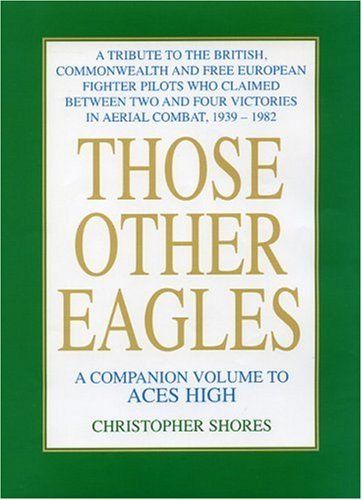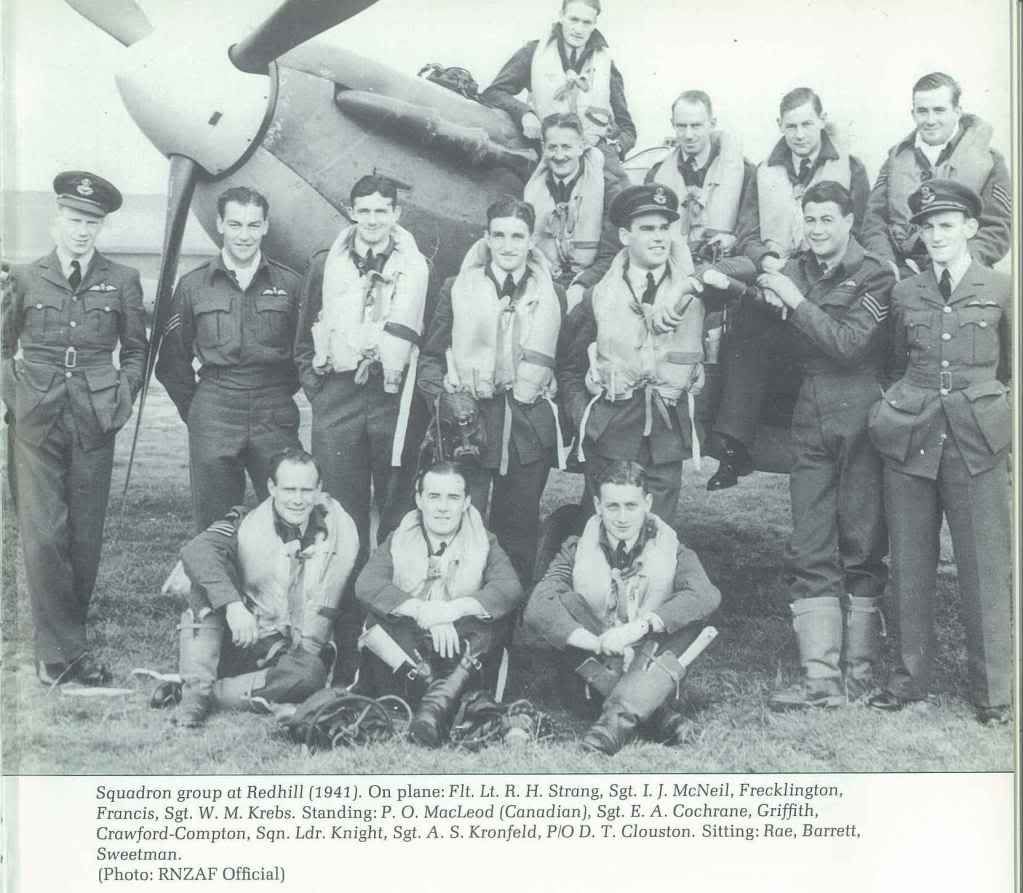|
|
Post by aircraftclocks on Mar 19, 2013 22:07:23 GMT 12
From the 81 SQN, 'A' Flight, Spitfire V's as shown in the ORB, here are the summary of events and detail of the work carried out on that day.   |
|
|
|
Post by Andy Wright on Mar 20, 2013 9:41:03 GMT 12
Love that second photo, Marty. That smile says it all.
|
|
|
|
Post by McFly on Mar 20, 2013 19:46:13 GMT 12
From the 81 SQN, 'A' Flight, Spitfire V's as shown in the ORB, here are the summary of events and detail of the work carried out on that day.   That's great. There might also be the 'Combat Report' available from 'The National Archives' in the UK - www.nationalarchives.gov.uk/Also a bit more detail on this website - www.cieldegloire.com/002_robinson_w_j.php including a few Oscars...!!   Jim Robinson is also mentioned in the book 'Those Other Eagles' - Publication Date: Sep 1 2004 |
A TRIBUTE TO THE BRITISH, COMMONWEALTH AND FREE EUROPEAN FIGHTER PILOTS WHO CLAIMED BETWEEN TWO AND FOUR VICTORIES IN AERIAL COMBAT, 1939 - 1982
A COMPANION VOLUME TO ACES HIGH
This massive, extensively researched volume is an indispensable companion to the eminent historian Christopher Shores' other seminal work (with Clive Williams), Aces High, Volumes one and two. In those books he detailed the lives and exploits of those aces who achieved five or more aerial victories, and gave exhaustive information on each score, the where, what, when and how. This completely new book follows the same format as the author now turns his attention to those claiming between two and four. Why this number? Because a single score could have been a fluke, whereas achieving more, points towards the potential skill and virtuosity of a fighter pilot, offering the promise of a higher total if the opportunity arose - and this is the nub of the matter. A fair majority of these men would have shot down many more enemy aircraft if the theatre of operations and timing had been right. Nevertheless there are numerous illustrious and familiar names within these pages; people like Neil Cameron, Guy Gibson, Tom Gleave, Pat Hancock, Micky Martin, David Morgan, Rene Mouchotte, Jeffrey Quill, Fred Rosier, Whitney Straight, Peter Twiss, Geoffrey Wellum, and so many more, a great majority of whom lived fascinating lives in and out of the service. There are nearly 1800 entries and as many of the pilots are illustrated as is possible. The demand for this book from historians, collectors and veterans' families is certain to be high.
 |
|
|
|
Post by Andy Wright on Mar 21, 2013 9:12:37 GMT 12
Those Other Eagles could be grabbed very affordably direct from Grub Street for a while. I got mine close to two years ago for less than A$30 which, for what it is, is an absolute bargain for a brand new book. It does come up on special every now and then so worth keeing an eye out for.
|
|
|
|
Post by McFly on Mar 22, 2013 19:26:30 GMT 12
Hi, Can anyone tell me if there will be a reunion for 485 Squadron in 2014? My Father was a member of the squadron and I would dearly like to attend. Thanks, Rob. Hi Rob, I take it your father is Lyndon Griffith DFC..? If so he had a varied and colourful time during the war and was one of the ‘foundation’ members of 485 (NZ) Sqn in March 1941 along with Harvey Sweetman and being credited with one aerial victory while with 122 Sqn and two V1s while with 274 Sqn.  Lyndon’s DFC citation (5 June 1942) reads – Pilot Officer Griffith (No.485 (NZ) Squadron) has participated in 70 sorties over Northern France. He has always shown the greatest keenness and enthusiasm, setting a fine example to his colleagues. He has led his flight on several occasions.In Kevin Wells book on 485 (NZ) Sqn, he writes “Following orders from the station commander of RAF Redhill where they were stationed that ‘All taxiing accidents have to stop’ (due to the high number occurring). The very next day, Griffith was carefully picking his way out of the dispersal zone peering anxiously from either side of his cockpit when a sudden violent clattering of metal on metal and flying bits and pieces indicated that the station commander’s words had not improved the situation. When the dust and smoke and the noise had settled, a pale Griffith was able to take stock of what had happened. He had run straight into the tail and fuselage of another Spitfire which had been directly in his path. If Griffith was a little shaken by the accident, it was nothing compared to the feelings of the mechanic who had been working in the cockpit of the aircraft that Griffith’s propeller was chopping up. Fortunately the blades did not reach the cockpit, or the explosive device attached to the IFF radio”. ;D
On another occasion in Aug 1942, Griffith was extremely fortunate not to have been killed or made a prisoner-of-war. His Spitfire was hit, forcing him to use his parachute after trying to nurse his aircraft home. He came down in the Channel very close to the French coast but after only an hour in the sea he was whisked away by a British rescue launch.   |
|



